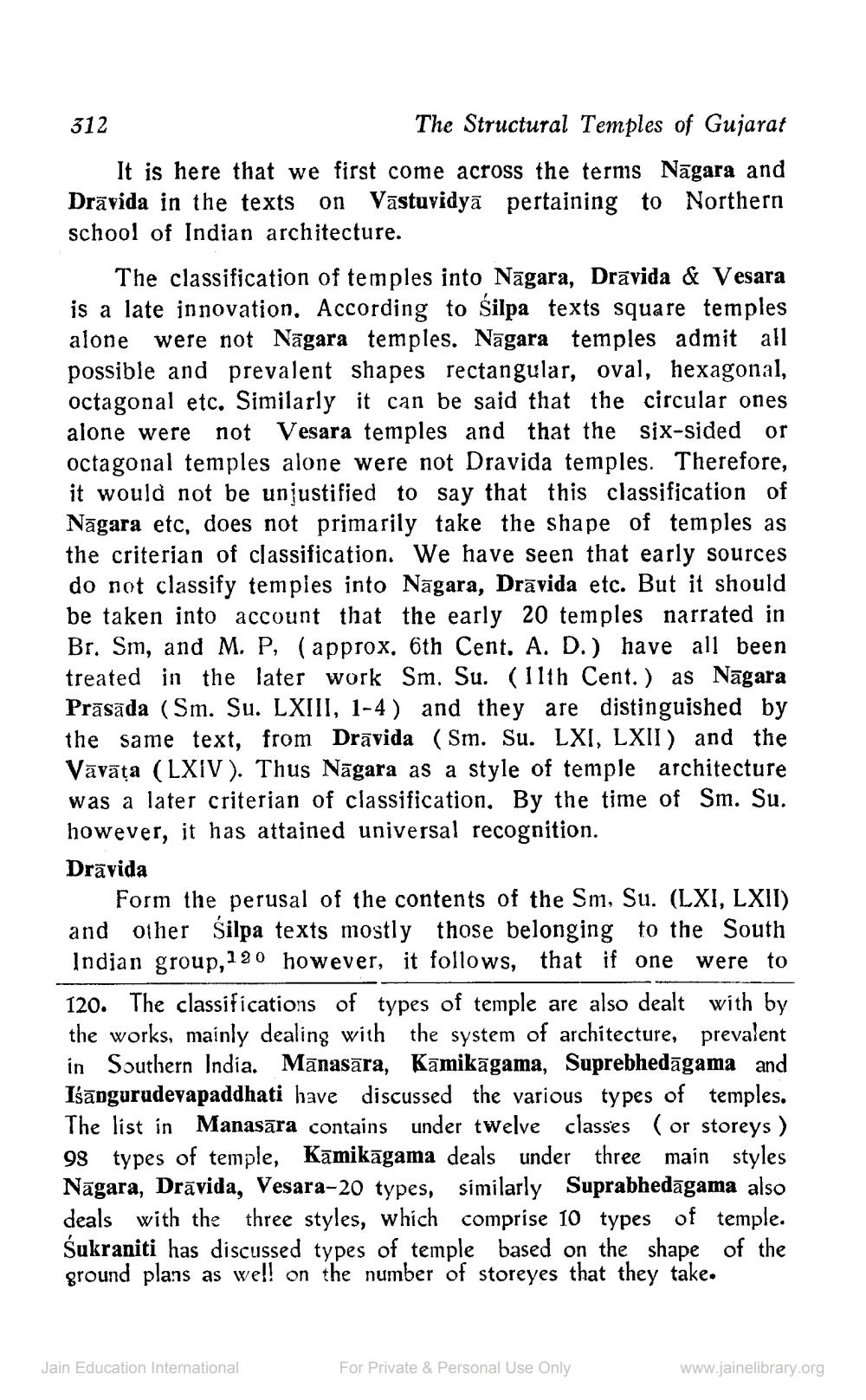________________
The Structural Temples of Gujarat
It is here that we first come across the terms Nagara and Dravida in the texts on Vastuvidya pertaining to Northern school of Indian architecture.
312
The classification of temples into Nāgara, Dravida & Vesara is a late innovation. According to Silpa texts square temples alone were not Nagara temples. Nāgara temples admit all possible and prevalent shapes rectangular, oval, hexagonal, octagonal etc. Similarly it can be said that the circular ones alone were not Vesara temples and that the six-sided or octagonal temples alone were not Dravida temples. Therefore, it would not be unjustified to say that this classification of Nāgara etc, does not primarily take the shape of temples as the criterian of classification. We have seen that early sources do not classify temples into Nāgara, Dravida etc. But it should be taken into account that the early 20 temples narrated in Br. Sm, and M. P, (approx. 6th Cent. A. D.) have all been treated in the later work Sm. Su. (11th Cent.) as Nāgara Prāsāda (Sm. Su. LXIII, 1-4) and they are distinguished by the same text, from Dravida (Sm. Su. LXI, LXII) and the Vāvāta (LXIV). Thus Nagara as a style of temple architecture was a later criterian of classification. By the time of Sm. Su. however, it has attained universal recognition.
Dravida
Form the perusal of the contents of the Sm, Su. (LXI, LXII) and other Silpa texts mostly those belonging to the South Indian group,1 120 however, it follows, that if one were to 120. The classifications of types of temple are also dealt with by the works, mainly dealing with the system of architecture, prevalent in Southern India. Mānasara, Kāmikāgama, Suprebhedāgama and Isangurudevapaddhati have discussed the various types of temples. The list in Manasara contains under twelve classes (or storeys) 98 types of temple, Kāmikāgama deals under three main styles Nāgara, Drāvida, Vesara-20 types, similarly Suprabhedāgama also deals with the three styles, which comprise 10 types of temple. Sukraniti has discussed types of temple based on the shape of the ground plans as well on the number of storeyes that they take.
Jain Education International
For Private & Personal Use Only
www.jainelibrary.org




